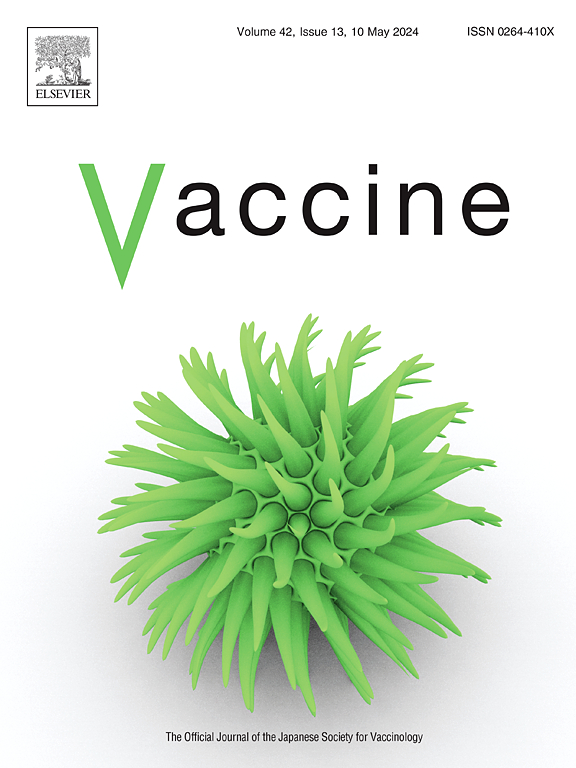在全球COVID-19疫苗接种工作的头三年,无家可归者接种COVID-19疫苗的情况:系统回顾和荟萃分析
IF 4.5
3区 医学
Q2 IMMUNOLOGY
引用次数: 0
摘要
无家可归者在接种疫苗方面存在复杂的障碍,包括COVID-19疫苗接种。因此,这一脆弱人群的COVID-19疫苗接种率可能低于一般人群。本系统综述和荟萃分析报告了在全球COVID-19疫苗接种工作的头三年发表的文献中,无家可归者接种COVID-19疫苗的情况,包括与一般人群的比较。对八个电子数据库进行了搜查。来自高收入国家的同行评议的英文和全文研究被考虑纳入。研究被考虑到2023年12月31日。总共检索了1884项研究,在删除重复后,筛选了1167项研究。本综述纳入了31项研究。对于报告接种了任何一种或首次接种了COVID-19疫苗的研究,采用随机效应荟萃分析来汇总覆盖率估计。它包括来自18项研究的28个首次疫苗剂量覆盖率估计,其中包括308,253名参与者中的104,139名接种者。无家可归者首次接种疫苗覆盖率的汇总估计为43%(95%置信区间:35%,51%)。95%预测区间为(0,88 %)。后续剂量的摄取是不均匀的,并有叙述性的报道。第二剂的吸收率从31.3%上升,一项研究报告第三剂的吸收率为7.2%。无家可归者的COVID-19疫苗接种率低于一般人群。当比较地区/州/国家层面、多个时间点以及针对包括退伍军人在内的不同亚人群的研究时,摄取的差异仍然存在。这是有问题的,因为无家可归的人更有可能获得与covid -19相关的较差结果。重要的是要认识到无家可归的人是一个面临风险、难以接种疫苗的群体,疫苗接种战略应针对这一人群,以提高接种率。本文章由计算机程序翻译,如有差异,请以英文原文为准。
COVID-19 vaccination uptake in people experiencing homelessness during the first three years of the global COVID-19 vaccination effort: A systematic review and meta-analysis
There are complex barriers to vaccination, including COVID-19 vaccination, in people experiencing homelessness. Consequently, it is likely COVID-19 vaccination uptake in this vulnerable population is lower than in general populations. This systematic review and meta-analysis reports COVID-19 vaccination uptake in people experiencing homelessness, including in comparison to general populations, in literature published during the first three years of the global COVID-19 vaccination effort.
Searches were conducted on eight electronic databases. Peer-reviewed studies from high-income countries available in English and in full-text were considered for inclusion. Studies were considered up to 31 December 2023.
In total 1884 studies were retrieved and, after removal of duplicates, 1167 were screened. Thirty-one studies were included in this review. For studies reporting uptake of either any, or first, COVID-19 vaccine a random effects meta-analysis was used to pool coverage estimates. It included 28 first vaccine dose coverage estimates from 18 studies including 104,139 vaccinated individuals in 308,253 participants. The pooled estimate for first dose vaccine coverage in people experiencing homelessness was 43 % (95 % CI: 35 %, 51 %). The 95 % prediction interval was (0, 88 %). Uptake of subsequent doses was heterogeneous and was reported narratively. Uptake of the second dose ranged upwards from 31.3 %, and uptake of the third dose was reported in one study as 7.2 %.
COVID-19 vaccination uptake in people experiencing homelessness is lower than in general populations. Disparities in uptake persisted when comparing uptake at regional/state/national levels, at multiple timepoints, and in studies focused on different sub-populations including veterans. This is problematic, considering people experiencing homelessness are more likely to have poorer COVID-19-associated outcomes. It is important to recognise people experiencing homelessness are an at-risk, hard-to-reach group for vaccination, and vaccination strategies should be targeted to this population to improve uptake.
求助全文
通过发布文献求助,成功后即可免费获取论文全文。
去求助
来源期刊

Vaccine
医学-免疫学
CiteScore
8.70
自引率
5.50%
发文量
992
审稿时长
131 days
期刊介绍:
Vaccine is unique in publishing the highest quality science across all disciplines relevant to the field of vaccinology - all original article submissions across basic and clinical research, vaccine manufacturing, history, public policy, behavioral science and ethics, social sciences, safety, and many other related areas are welcomed. The submission categories as given in the Guide for Authors indicate where we receive the most papers. Papers outside these major areas are also welcome and authors are encouraged to contact us with specific questions.
 求助内容:
求助内容: 应助结果提醒方式:
应助结果提醒方式:


